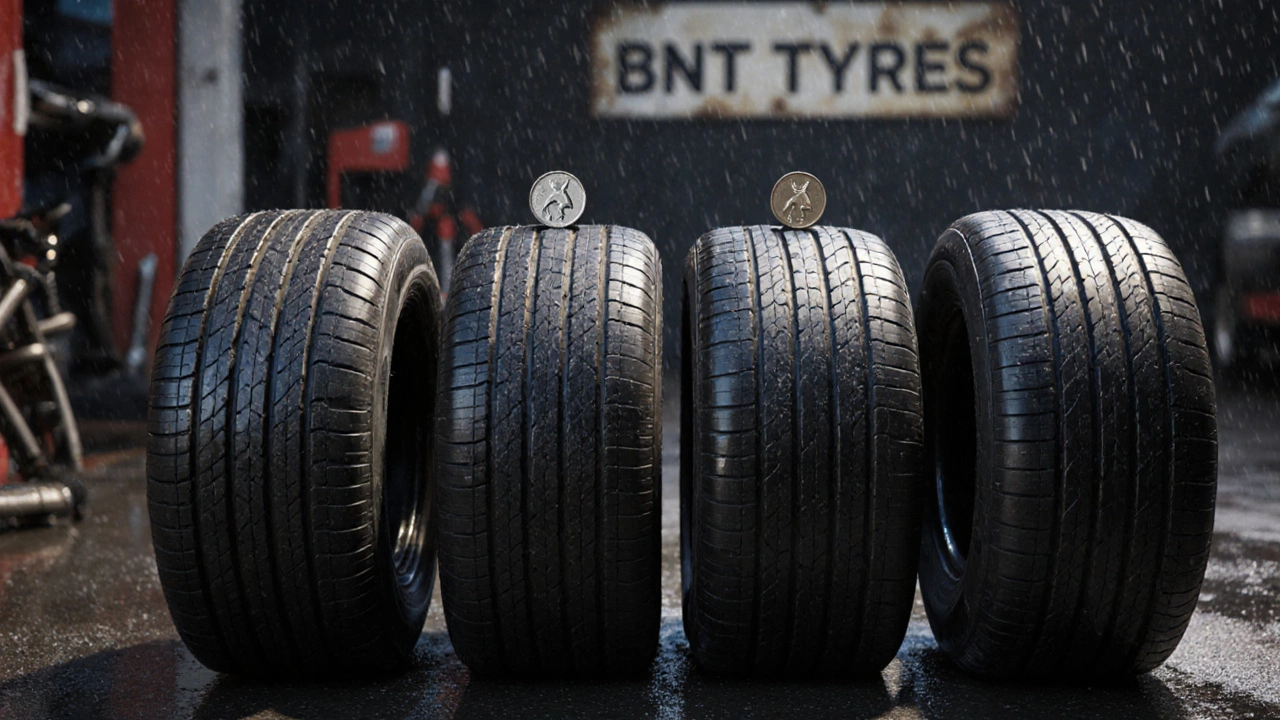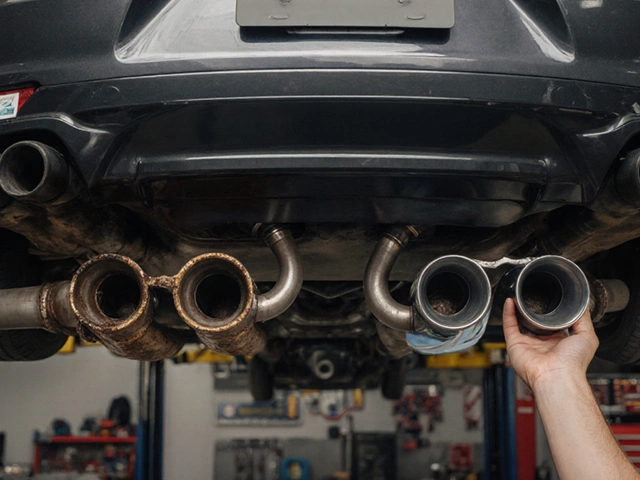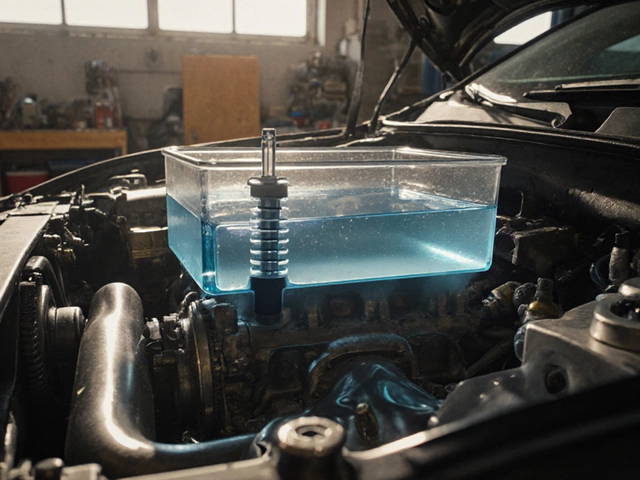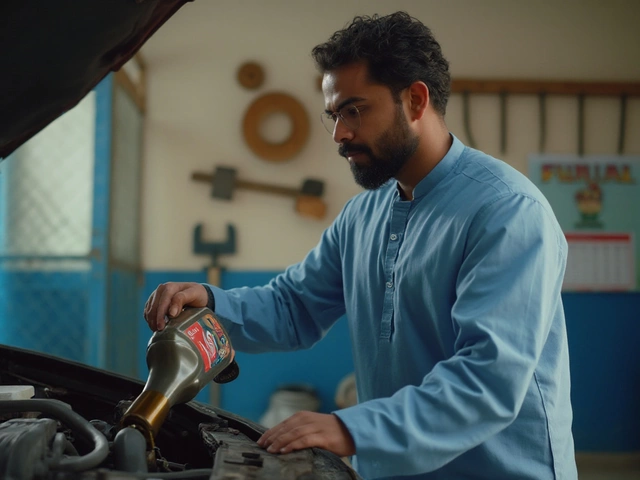Tire Replacement Checker
Check if you need to replace all four tires based on Australian safety standards and vehicle type.
Tire Information
Safety Assessment Result
Cost Analysis
Recommendations
Ever looked at your tires and wondered if you really need to replace all four-even if only one or two look worn out? You’re not alone. Many drivers think swapping out just the damaged pair saves money. But here’s the truth: replacing only two tires can make your car unsafe, wear out your new tires faster, and even damage your transmission or differential. In Adelaide’s mixed conditions-hot summers, wet winters, and rough outback roads-getting this wrong can cost you more than just cash.
Why Replacing Just Two Tires Is a Bad Idea
Let’s say your front tires are down to 2mm tread depth, and your rears still have 5mm. You think, “I’ll just replace the fronts.” Sounds logical, right? But tires aren’t like brake pads. They work as a team. When you mix old and new tires, you create uneven grip. That’s dangerous.
Imagine driving through a sudden rainstorm on the Southern Expressway. Your new front tires bite into the water, but the older rears hydroplane. Your car spins. That’s not hypothetical. In 2024, South Australia’s road safety data showed 17% of single-vehicle skid crashes involved mismatched tire tread depths. The difference in grip between a 2mm and 5mm tire is enough to throw off your car’s stability control system.
Even if you don’t crash, your car’s drivetrain suffers. Modern cars-especially AWD and 4WD models like the Subaru Forester or Toyota RAV4-rely on all four tires rotating at the same speed. A new tire has a slightly larger diameter than a worn one. That tiny difference (as little as 3mm) forces your center differential to work harder, overheating it over time. Repairing a damaged differential in an AWD vehicle? That’s a $3,000+ bill. Replacing all four tires? Around $800.
When Is It Okay to Replace Just Two?
There’s one exception: putting new tires on the rear axle, even if the fronts are still good. This isn’t about saving money-it’s about safety.
When rear tires are worn, your car is more likely to oversteer in wet or slippery conditions. Oversteer means the back end slides out. It’s harder to control than understeer (where the front loses grip). Most drivers panic and overcorrect, leading to spins. New tires on the rear give you better rear grip, helping you stay in control if the front tires start to slip.
So if you’re replacing two, always put the new ones on the back-even if the fronts are more worn. But here’s the catch: this only works if the tread difference between front and rear is less than 3mm. If the rears are below 2mm and the fronts are above 5mm, you’re still at risk. That’s when you replace all four.
How to Tell If You Need All Four
You don’t need a mechanic to figure this out. You can check yourself with a simple coin test.
- Take a 20-cent coin (Australian). Insert it into the tire tread with the kangaroo facing down.
- If you can see the top of the kangaroo’s head, your tread is below 3mm. That’s the legal minimum in Australia, but it’s not safe.
- If the kangaroo’s head is fully covered, you’ve got at least 3mm. Good.
- If the tread is below 1.6mm anywhere on the tire, replace it immediately.
Check all four tires in at least three spots-inner, middle, and outer edge. Uneven wear means alignment or suspension issues. Fix those before installing new tires.
Also, look at the tire age. Rubber degrades over time, even if tread looks fine. Check the DOT code on the sidewall. The last four digits tell you the week and year it was made. If your tires are over six years old, replace them-even if they’ve got plenty of tread. Heat and UV exposure in Adelaide’s climate breaks down rubber faster than you think.
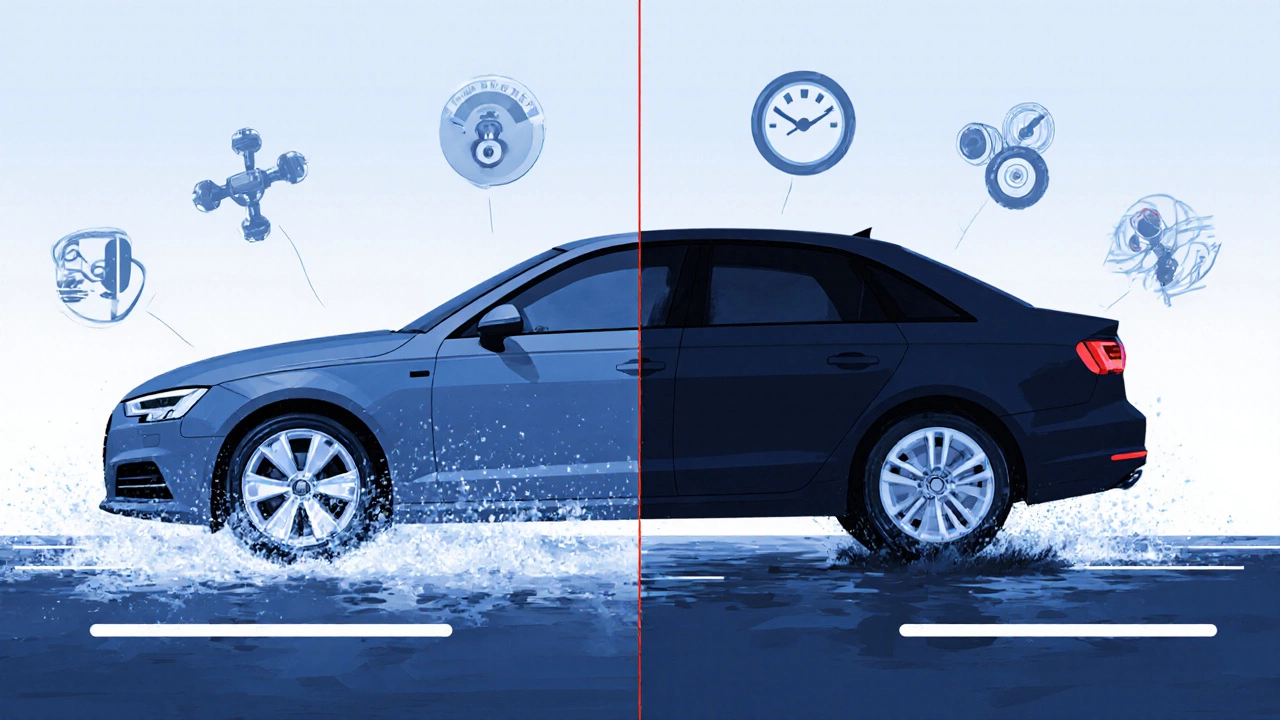
Matching Tires: It’s Not Just About Brand
You might think, “As long as they’re the same size, it’s fine.” Not true.
Replacing one tire with a different model-even if it’s the same size and load rating-can cause problems. Tire manufacturers design tread patterns for specific handling, water evacuation, and noise. Mixing brands or models can lead to:
- Uneven braking
- Reduced cornering grip
- Increased road noise
- Strain on your car’s electronic stability control
Best practice? Replace all four with the same brand, model, size, and load index. If you can’t find the exact match, get the closest possible. For example, if your original tires were Michelin Energy Saver A/S, try Michelin CrossClimate 2-not a completely different line like Goodyear Assurance.
And never mix summer, all-season, and winter tires. Even if they’re the same size, the rubber compound and tread design are too different. In Adelaide, you don’t need winter tires-but if you’ve got all-seasons, stick with all-seasons.
What About Spare Tires?
Most modern cars come with a space-saver spare. These are not meant for long-term use. They’re rated for 80 km/h and only 80 km of driving. If you’ve used your spare, you’re already driving on mismatched tires.
Don’t wait. Get your flat tire repaired or replaced ASAP. If you’ve driven more than 50 km on the spare, it’s likely worn enough to require replacement. And if you’re replacing the flat tire, you should probably replace its pair on the same axle too-especially if the other tire is over three years old.
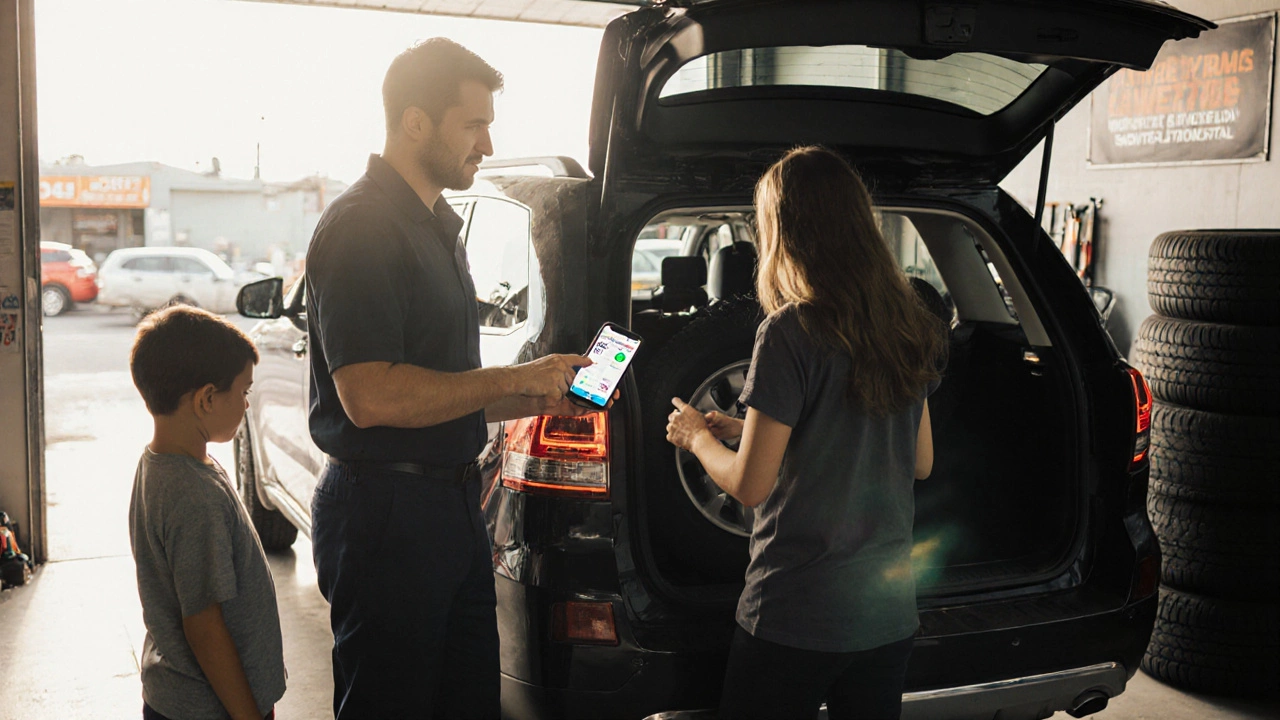
Cost Breakdown: Why Replacing All Four Saves Money
Let’s do the math. In Adelaide, a good set of four all-season tires (like Bridgestone Turanza or Pirelli Cinturato) costs between $700 and $1,100 installed. Two tires? $350-$550.
But here’s what you’re not seeing:
- Worn suspension parts: Uneven tire wear stresses shocks, struts, and control arms. Replacing those after two years? Add $1,200.
- Reduced fuel economy: Mismatched tires increase rolling resistance. You’ll burn 3-7% more fuel. Over 10,000 km, that’s $150-$350 extra.
- Insurance claims: If you crash due to tire mismatch, your insurer might deny part of the claim if they prove negligence.
- Resale value: A car with four matching, low-wear tires sells for 10-15% more than one with mismatched tires.
Replace all four now, and you’re not spending more-you’re avoiding bigger costs down the road.
Real-World Advice from Adelaide Mechanics
I’ve talked to over a dozen tire shops in Adelaide-Bridgewater, Noarlunga, Gawler, and the city. The consensus? Replace all four if:
- Any tire is below 2mm tread depth
- Two or more tires are over six years old
- You’ve used a space-saver spare
- Your car is AWD or 4WD
- You drive on highways regularly
One mechanic at BNT Tyres in Wingfield told me: “I’ve seen people save $400 by replacing two tires. Then they come back six months later with a blown differential. That repair costs $3,200. I don’t let them leave until I show them the math.”
And if you’re on a tight budget? Buy one good set of four tires on a payment plan. Many shops offer 0% interest over 6-12 months. It’s cheaper than paying for repairs later.
What to Do Next
Here’s your simple action plan:
- Check the tread depth on all four tires using a 20-cent coin.
- Find the DOT code on each tire and note the manufacture date.
- If any tire is below 2mm tread or over six years old, replace all four.
- If tread is above 3mm on all, and all tires are under six years old, you’re safe for now.
- Book a free alignment check with your tire shop-uneven wear is often a sign of suspension issues.
Don’t gamble with your safety-or your wallet. Four matching tires aren’t a luxury. They’re the only way to drive confidently in Australia’s unpredictable roads.
Do I need to replace all four tires if only one is damaged?
If the other three tires are still in good condition-tread above 3mm and under six years old-you can replace just the damaged one. But only if it matches the brand, model, and size exactly. If the other tires are worn or old, replacing just one creates imbalance and risks your car’s safety systems. Most mechanics recommend replacing all four if any tire is below 3mm tread or over six years old.
Can I mix tire brands when replacing two tires?
No. Mixing brands-even if they’re the same size-can cause uneven grip, poor handling, and stress on your car’s stability control. Always use the same brand and model on all four tires. If you can’t find the exact match, choose the closest available from the same tire family (e.g., Michelin CrossClimate 2 instead of Michelin Primacy 4).
Is it safe to drive with mismatched tire tread depths?
It’s risky. A tread difference of more than 3mm between front and rear tires can cause loss of control in wet conditions. In AWD or 4WD vehicles, it can damage the differential. Even in FWD cars, it affects braking and cornering. The legal minimum is 1.6mm, but 3mm is the safety threshold. Don’t wait until you’re at the limit.
How often should I replace my car tires in Adelaide?
In Adelaide’s climate, tires typically last 4-6 years or 40,000-60,000 km, whichever comes first. Heat and UV exposure degrade rubber faster than mileage. Even if tread looks good, replace tires after six years. Check the DOT code on the sidewall to find the manufacture date.
Should I replace tires on both axles at the same time?
Yes, if the tires on one axle are worn enough to need replacing. Replacing only the front or only the rear creates imbalance. If you’re replacing two, put the new ones on the rear axle for better stability. But if two tires on one axle are worn, it’s safer-and smarter-to replace all four.
